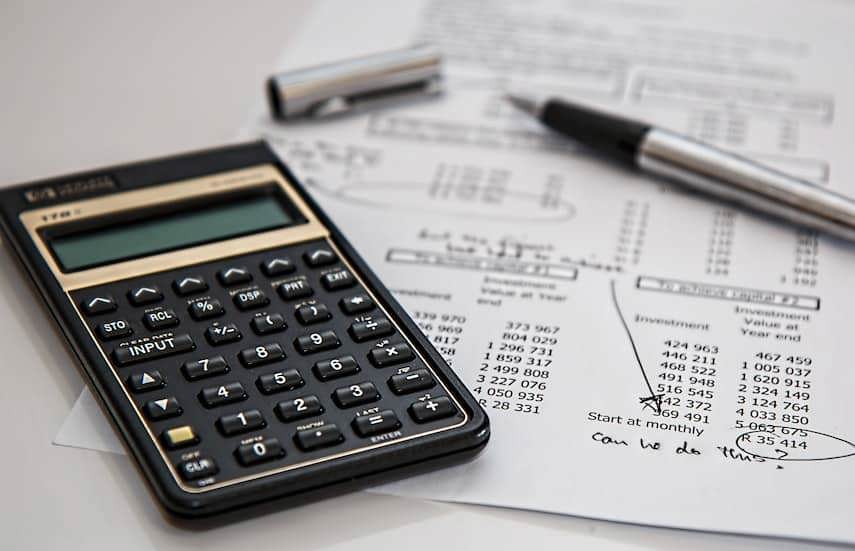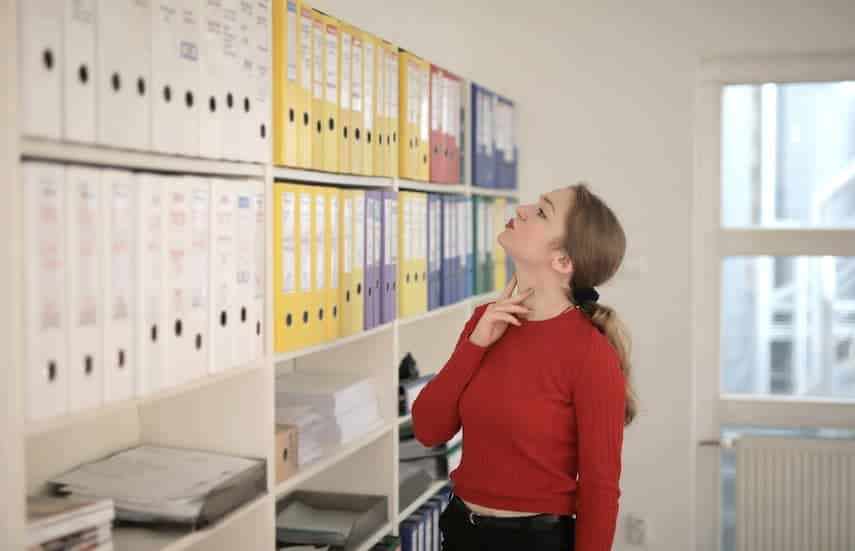
An inventory accounting journal entry records your inventory transactions, helping to categorise your financial expenses and earnings. This makes them an essential element of inventory accounting.
In this guide, we break down the different accounting methods used in product businesses and list 13 of the most important inventory accounting journal entries you need to know.
What are inventory accounting journal entries?
Inventory accounting journal entries are records in your accounting ledger that document your inventory transactions. There are different categories of journal entries, and the type and quantities of inventory you hold will determine the specific inventory accounting journal entry you use.

Perpetual vs periodic inventory accounting methods
Perpetual and periodic inventory accounting methods are two practices used to account for inventory transactions.
Here’s the difference:
- Perpetual inventory accounting entries continuously update your inventory. Each time a purchase is made from a supplier or when a product is sold to a customer the transaction is recorded. Adjustments are made whenever items are returned or where cash discounts have been applied.
- Periodic inventory is a comparative valuation method that relies on physical inventory counts. These counts are undertaken at specific times. In the periodic inventory system, the cost of goods sold (COGS) is not determined until the end of the accounting cycle.
Double entry inventory accounting
Double entry accounting is an accounting method that records inventory transactions twice.
Companies will either manufacture products to sell or purchase inventory from their suppliers. The money spent to acquire goods is added to an asset account called inventory and deducted as COGS (or manufactured) once those items are sold.
Different categories of accounts are recorded on either side of the accounting ledger. Each transaction is recorded on both sides of the accounting ledger when the value increases and on the opposite side when the value decreases.
- A debit entry is made on the left side of the account to record the money spent on inventory purchases.
- A credit entry is made on the right side to record the total dollar amount of the inventory as a current asset.
Your inventory value increases when additional units are added.
Depending on how the business acquires its products – whether through purchasing or manufacturing – the inventory value is either the purchase cost or production costs such as direct labour, raw materials, or manufacturing overheads.
Inventory assets are recorded in your account ledger as debits when their value increases and entered as credits when their value declines.

13 inventory accounting journal entries
Depending on the type of inventory you have and how much your business carries, there are different kinds of inventory accounting journal entries to help you determine the financial expenses and earnings of your business.
1. Inventory purchase
In your inventory purchase entries, inventory purchases are reflected as current assets because they are typically intended to be sold within one financial year.
In the double-entry accounting method inventory purchased on credit is also recorded as accounts payable, or your short-term financial obligation to pay your supplier.
To identify the amount of inventory purchased within a set timeframe you start with the total value of your beginning inventory, ending inventory, and of your COGS. Subtract the beginning inventory from the ending inventory and add the COGS to the difference to determine your entire inventory purchases for the accounting period.
- Learn more: Marketing for Accountants: Beginner's Guide
2. Cost of goods sold (COGS)
Cost of goods sold (COGS) is the cost allocated to the sale of goods or services to your customers.
The COGS inventory accounting journal entries are your beginning inventory plus purchases during the accounting period, minus your ending inventory. COGS are only recorded at the end of an accounting period to show inventory sold.
Different inventory valuation methods can result in different net values and therefore the total inventory assets on your balance sheet. For this reason, companies are obligated to select one valuation method and use it consistently over time.
When deciding on the accounting method to determine inventory cost, you need to decide how closely the different methods reflect the actual cost of inventory flow for your business and how well these costs can be matched to related revenues.
How to determine the cost of goods sold journal entry:
1. Verify your beginning inventory balance.
The actual amount of beginning inventory you own should be accurately valued and correctly reflect all inventory asset balances in your general ledger.
Any variance between the beginning balance and the actual cost of the beginning inventory will be absolved through the cost of goods sold within the current accounting period.
2. Identify accumulated purchase costs of inventory.
As you continue to receive supplier invoices for shipped inventory, you record these costs in a single purchase account or in the inventory asset account that is most applicable.
Accrue purchases at the end of the accounting period for goods received but not the associated supplier invoice. All other accrued costs are designated as overhead and allocated to inventory produced during the accounting period.
3. Calculate ending inventory units.
Undertake a physical inventory count at the end of the accounting period to determine the exact quantities of inventory on hand. Alternatively, cycle counting will determine these balances if you are using a perpetual inventory system.
Establishing the cost of your ending inventory will depend on the inventory accounting method used to determine the cost. For example, FIFO, LIFO, or weighted average.
4. Determine the cost of goods sold.
If you’re using a purchase account, add the balance of that account to the beginning inventory total, then subtract the costed ending inventory total to arrive at the cost of goods sold.
If you’re using several inventory accounts and not a purchase account, add these together then subtract the costed ending inventory total to get your cost of goods sold amount.

3. Indirect production costs
This inventory accounting journal entry is where production-related expenses for your inventory such as rent, utilities, storage, and materials used in the manufacturing process are recorded. The entry debits your manufacturing overhead and credits your raw materials inventory to record your indirect material costs.
It’s important to identify any indirect production cost, allowing you to create a complete budget that includes all the expenses related to your inventory.
4. Lower of cost
The lower-of-cost rule states that a business inventory accounting journal entry must record inventory at the lower of cost.
The lower of cost is compared to the original cost of your inventory and its current market price. Lower-of-cost journal entries are generally used when inventory has deteriorated, become obsolete, or if there has been a decline in market prices.
It’s important to undertake periodic market assessments to get an accurate insight of your inventory value. When the market value is higher or lower than the recorded value of the inventory you carry, a journal entry is created to reflect that change in value.
5. Sales transactions
As well as recording your expenses, inventory accounting journal entries must also record your sales. Sales transaction entries record any profits from the sale of finished goods.
You can record this transaction by transferring the cost of the finished goods sold to the expense account for the cost of goods sold. This moves the cost of inventory from where it’s recorded as an asset on your balance sheet, to your income statement, where it is recorded as an expense.
6. Production labour
Production labour entries help you keep track of your labour expenses.
These entries record the wages paid to your employees who produce, warehouse, transport and sell your products.
Production labour entries include:
- Payroll taxes
- Superannuation
- Holiday pay
- Leave entitlements
- Healthcare
- Any other payments you provide to an employee in addition to their regular wages.
Production labour costs can be categorised as direct and indirect costs.
Direct labour costs include wages for employees who are directly involved in the manufacture, assembly, or inspection of a product during its various stages of production.
Indirect labour costs are the wages for employees such as maintenance staff, technicians or managers who assist the direct labour employees to do their jobs but aren’t directly involved in the product production.

7. Raw materials
A raw materials journal entry is separate from an inventory purchase entry. The raw materials entry also accounts for the movement of raw materials within your warehouse, allowing you to track when your production materials are moved from storage into production.
Raw material costs are the necessary expenses incurred to manufacture a product and include the purchase of any raw materials, parts, and components that go directly into making a product.
Not all businesses use the raw materials inventory entry, but for those that do, it helps to track the cost of materials that move through a lengthy manufacturing process.
8. Work in progress
Work-in-progress (WIP) journal entries record and document current assets on your business balance sheet.
WIP accounting entries don't include raw materials or finished goods inventory.
Instead, the WIP inventory journal entry includes the total amount of raw materials that are necessary to produce a specific item because these costs of materials first appear at the start of the production process.
This cost will eventually be applied to your finished goods account. Depending on the length of production time, instead of applying this to the WIP account, it might be easier to move the cost of raw materials directly into the finished goods account.
Your WIP account indicates goods that have progressed through the manufacturing stage but are still not ready for sale.
9. Finished goods
The journal entry for your finished goods helps you to keep track of completed products. It identifies the cost of completed goods once they are out of the production phase of the manufacturing process.
Your finished goods entry helps you to compare the cost of completed goods with those still in production.
10. Inventory spoilage
In accounting, normal inventory spoilage is included in the standard COGS. Spoilage incurred through accidents, damage, or theft is charged as an expense.
While the cost of common inventory spoilage may initially be recorded as an asset, it will later be charged to your expenses in a subsequent accounting period.
Where inventory loss is not found until after an inventory count is conducted at the end of the accounting period to compare inventory value against your records, these losses are recorded as a debit and a corresponding credit to the inventory account itself.
- Learn more: How to Reduce Your Food Inventory Waste

11. Inventory write-off
An inventory write-off expense account records the value of any damaged inventory that cannot be sold. Inventory may be lost because of spoilage or other factors in the manufacturing process.
Whenever an entry is made in your inventory write-off expense account, you reduce the total amount of inventory carried.
You will debit your COGS account and credit your inventory write-off expense account. However, if the amount of lost inventory is significantly high or abnormally low, you can record the expenses as part of the COGS instead of accounting for them as an asset.
The inventory accounting journal entry that accounts for a write-off will reduce your inventory value by the write-off amount.
Learn more: Inventory Write-offs - Everything You Need to Know
12. Obsolete inventory
Obsolete inventory is any finished products that fail to be sold as expected.
It's not unusual for a business to not sell off the products in its inventory. Businesses even anticipate a certain percentage of their inventory stock may spoil, become damaged, go out of season, or become unsellable for some reason.
They indicate inventory obsolescence as part of their inventory journal. You report inventory obsolescence by debiting the relevant expense account and crediting the opposing asset account.
When the expense account has been debited, the amount spent on the now obsolete inventory is shown as an expense.
13. Returns
When merchandise is returned, it is necessary to make two journal entries.
- The first is a debit entry to reflect the return in your returns and allowances account.
- The subsequent entry will debit your cash account and credit your accounts receivable account.
Essentially, you must apply your journal adjustments according to the accounting rule of debits and credits:
- Debit your returns and allowances account for the amount you sold the inventory for, which is generally higher than the inventory purchase price or production cost. The debit amount is entered in the accounting ledger as a negative figure but will result in an increase on your returns and allowances journal balance.
- Credit the cost of the return to your accounts receivables if your customer purchased the inventory on credit and was invoiced for payment. Credits are entered as a positive figure in your accounts receivable, but decrease the balance of your accounts receivable.
- Debit the value of the inventory from your inventory account for the cost of the goods purchased. This reflects the inventory that has been added back into stock and will increase your inventory account.
- Credit the cost of the inventory to your COGS account. This inventory accounting journal entry will reduce the figure in your COGS expense account.
The importance of inventory accounting journal entries
Managing inventory is one of the most challenging areas of any organisation.
By undertaking regular inventory valuations, you can build an accurate picture of your business's inventory and how much it really costs.
If you don’t have a good understanding of how much your inventory is actually worth, it makes is difficult to understand the financial position of your business, and how the value of your inventory can, positively or negatively, affect your tax obligations and profitability.
Optimise your accounting efforts and inventory management with our inventory accounting software.
- Watch an inventory optimisation demo. Learn how Unleashed helps you track key inventory data in real-time, forecast sales demand, and set optimal stock levels to save you precious time and money.
- Sign up for a free 14-day trial. Discover first-hand how Unleashed helps you improve productivity, master the purchasing process, and boost efficiency with a risk-free two-week trial.
- Chat with an expert to assess your needs. Are you ready to take your business to the next step? Book a free chat with one of our in-house experts for an honest discussion about your stock optimisation requirements.
More posts like this
- B2B Inventory Management [Ultimate Guide] - Due to the high volume (and often, high value) of B2B customer orders, inventory management presents several unique challenges for manufacturers and w...
- MRO Inventory: What It Is & The 10 Best Practices to Manage It - Maintaining healthy levels of Maintenance, Repair and Operations (MRO) inventory is essential to the smooth running of your manufacturing, distributio...
- Seven Ways to Improve Collaboration in Inventory Management - When it comes to improving inventory performance, many businesses focus on technical improvements such as implementing real time inventory control, re...

